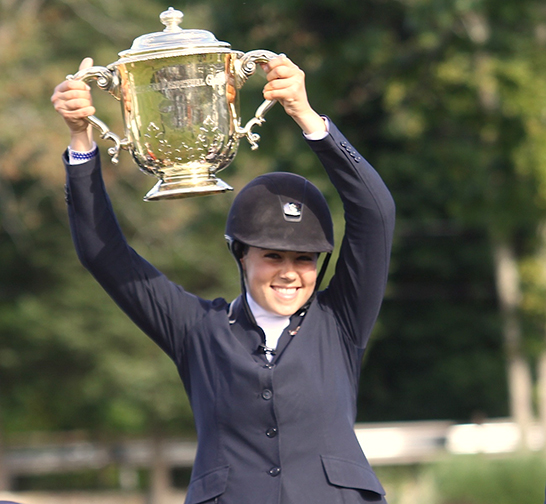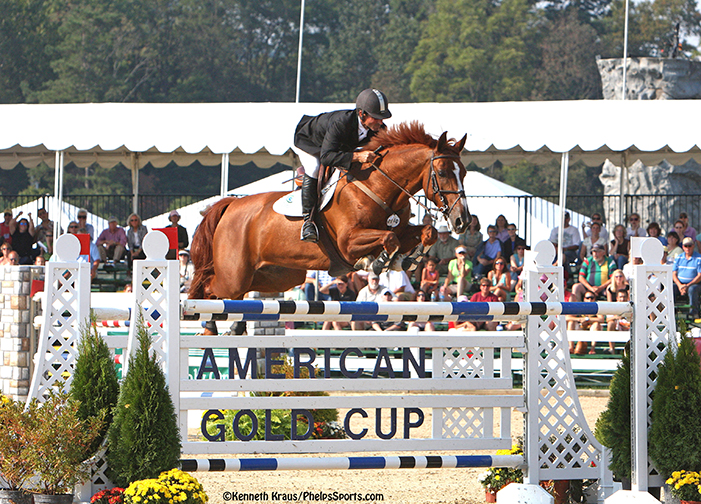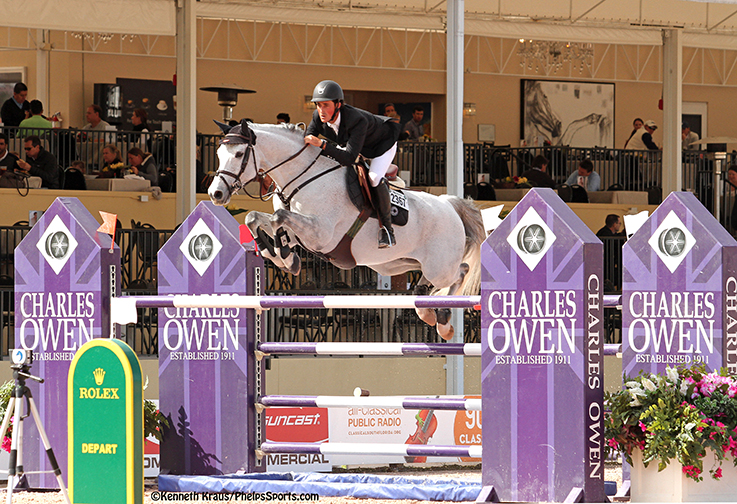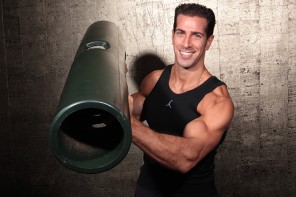“What’s so unique about our sport is that you have an animal doing most of the work,” says show jumper Brianne Goutal.
And that helps create a relatively level playing field on which horse and rider can transcend age and gender.
At 26, Goutal has already carved out a significant career for herself, capturing in 2013 the $200,000 American Gold Cup Grand Prix, a World Cup qualifying event in which she plans to compete again next month at Old Salem Farm in North Salem. But she is by no means near her peak as she would be in another sport.
“In this sport, experience makes you better,” says Brian Walker, a 31-year-old Canadian-American, who also expects to be in the Gold Cup again. “Look at Ian Millar, who at age 68 won the biggest Grand Prix of his life last year.” Walker’s referring to the $1.5-million CP International at Spruce Meadows in Calgary that Millar won aboard Dixson, a descendant of his longtime mount, Big Ben.
“It’s a 24/7 kind of a thing,” Norman Dello Joio says of show jumping. “When you’re not doing it, you’re thinking about it or planning it.”
Few know more about the mindset of the equestrian than “Stormin’ Norman” — son of the Pulitzer Prize-winning composer of the same name. He was the 1983 FEI World Cup winner aboard I Love You and a bronze medalist (aboard Irish) at the Barcelona Olympics in 1992, the year he was Equestrian of the Year. In 2004, he and Glasgow won the American Invitational — more than two decades after his triumph there aboard Allegro.
“It’s like the stock market,” says Dello Joio. “You have to be in it for the long haul. If you keep your eye on the big picture — and not live or die day to day but stick to a plan — you will win out in the end.”
That’s the kind of “horse sense” Dello Joio imparts to his two-legged students. He’s the chef d’equipe, or manager, of the Mexican Show Jumping Team and works with son Nick, 26, who’s beginning to make a name for himself in the sport. But Dello Joio also has four-legged “pupils” as well at Wembley Farms in Wellington, Fla., and at the places he rents in Bedford Hills and in Ridgefield, where he and the family summer.
“I try to start with young horses that may have talent,” he says, given the cost of the mature horses, mainly European Warmbloods, used in the ring. (Top show jumpers can command anywhere from the high six figures to as much as $15 million.)
Riders may have a string of six to 10 horses, a mix of those they own outright and others that are sponsored or syndicated. As with the riders, age and experience are advantages. Show horses are on average 10- to 12-year-olds. (For perspective, American Pharoah is a 3-year-old.) Goutal’s stable of steeds are in the 14- to 16-year-old category.
“They’re used to competition,” she says, “and less responsive to nerves.”
She manages them like an NBA team: “Most of the top riders have a number one horse they save to peak in competition and backup horses.” A long-suffering Knicks’ fan, Goutal likens this to conserving forward Carmelo Anthony for the big plays.
Show horses are also a mix of geldings, mares and stallions, with the rule of thumb being that geldings are the easiest to work with; mares, the most difficult; and stallions, the most stubborn. But Walker speaks for some other riders when he says, “A good horse is a good horse. …I generally look for a horse that seems like he’s on your side, a horse with a little life, one that’s brave but careful at the highest levels.”
“I think it’s great you have a horse that does most of the work,” Goutal says, “so that you’re able to remove a degree of strength (from the rider). But I think women are still at a disadvantage in terms of strength and endurance compatibility. Among the top 30 riders, men outnumber women.”
In the end, though, a good rider is a good rider, regardless of gender. Far more important, Dello Joio says, is the balance between talent and temperament, effort and ease, horse and rider:
“Those are the things that matter.”
The American Gold Cup CSI 4*-W, now part of the Longines FEI World Cup Jumping North American League, takes place Sept. 9-13. For more, visit theamericangoldcup.com or
oldsalemfarm.net.







